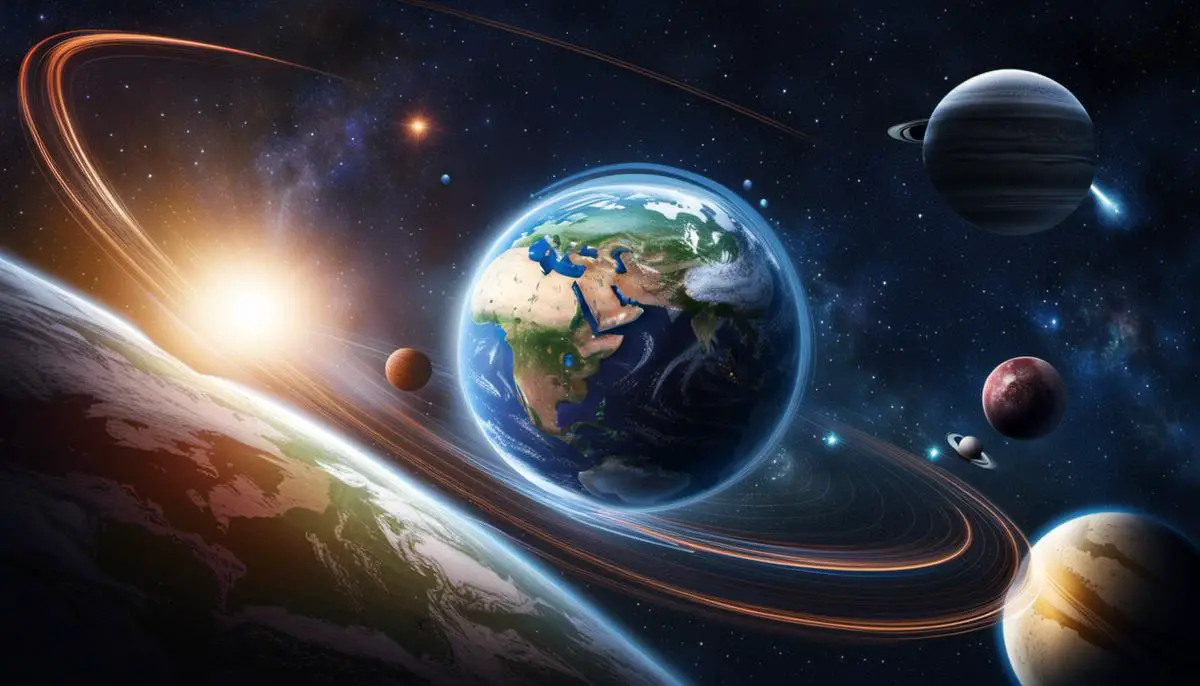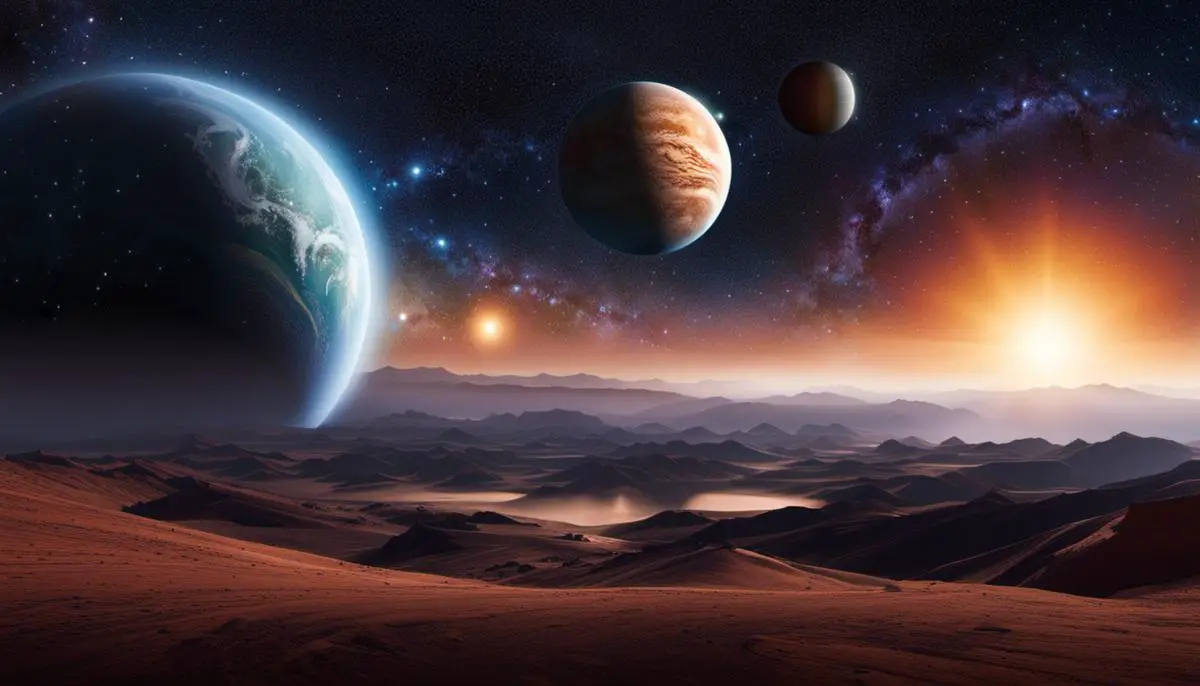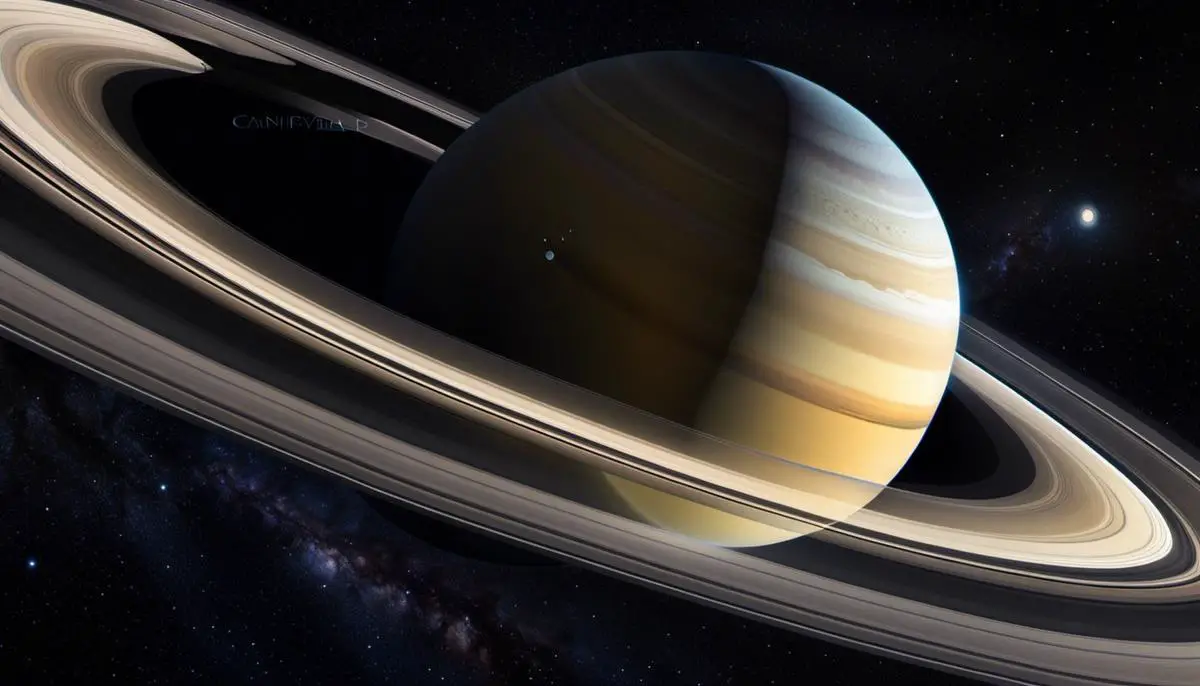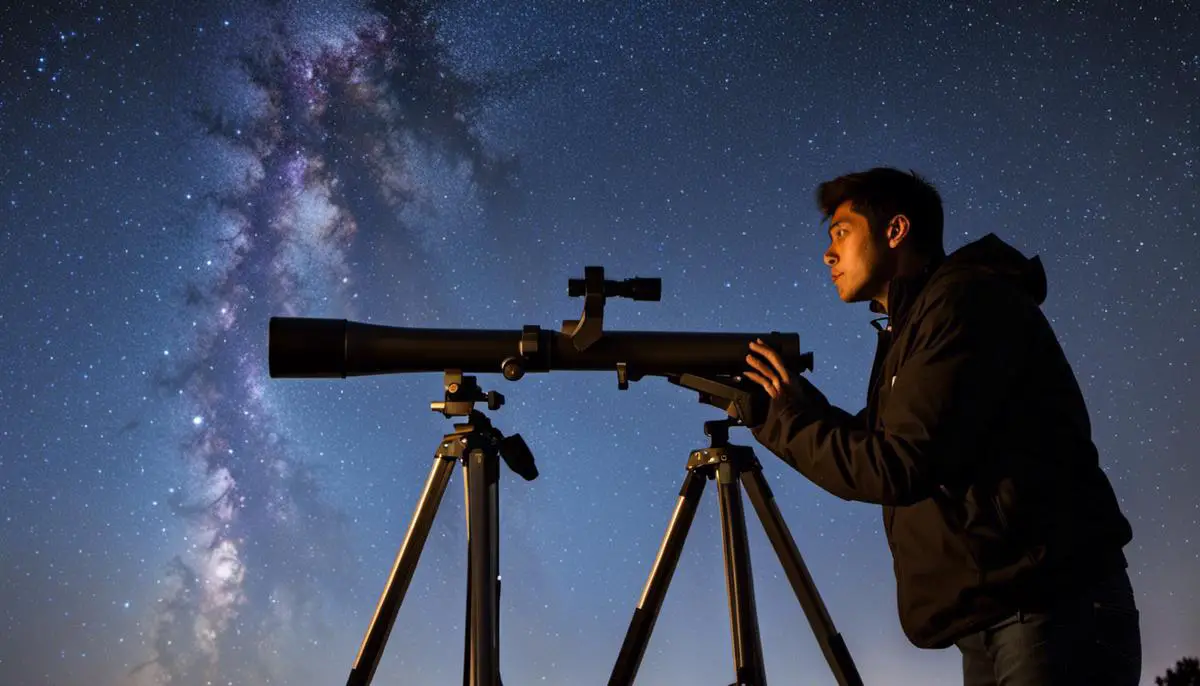When twilight fades and the stars start to dot the night sky, countless celestial bodies each with its own charm, story, and mystery; call out to the curious mind and soul. Among these myriad objects, planets bear a unique appeal. This allure lies not merely in their own complex surfaces and atmospheres, but also in their enthralling motion and changeable positions caused by the beautiful dance of our universe. Understanding these movements, however, requires not just aspiration, but also knowledge and the right tools. In this enlightening exploration, we will walk you through the fundamentals of astronomy, the art and science of identifying planets, a snapshot of tonight’s evening sky, and a brief overview of the tools that could aid your stargazing ambitions. As we delve into this journey, let’s focus on the planet glowing in our eastern evening sky tonight; a tantalizing invitation from the cosmos.
Understanding the Night Sky
Understanding the Night Sky and the Earth’s Rotation
The night sky as seen from Earth is a celestial sphere filled with objects we can observe like stars, planets, and constellations. The appearance of this sphere changes throughout the night and the year due to the Earth’s rotation and orbit around the Sun. When you observe the night sky, you’re actually witnessing the rotation of the Earth. The Earth spins on its axis from west to east, which is why celestial bodies appear to arise in the east and set in the west.
Observing the Planets in the Eastern Night Sky
Our Milky Way galaxy is home to five planets that can be regularly observed with the naked eye: Mercury, Venus, Mars, Jupiter, and Saturn. Each planet orbits the sun at its own pace, which causes their positions in the night sky to change over time. Tonight, gaze towards the east and you may see one or more of these celestial bodies. A shining, stationary object visible in the eastern sky just after sunset, for instance, might be Venus, often referred to as the ‘Evening Star’ due to its brilliance in the evening. Jupiter and Saturn may also be spotted in the eastern sky throughout the night. A quick look at ‘Sky at a Glance’ from Astronomy Magazine or a quick check on a trusted astronomy smartphone app can confirm which planets are visible at any given time.

Identifying Planets
Distinguishing Between Planets and Stars
Despite the similarities, it is possible to distinguish planets from stars by observing how they shine. Starlight twinkles as it travels a great distance through our atmosphere and reaches our eyes, while planets, being closer, shine steadily as the light they reflect is less affected by our atmosphere.
Planets are not always visible every night. Their relative motion across the sky is restricted to a narrow path known as the ecliptic, which mirrors the Sun’s path during the day. This movement means that over a period of weeks and months, planets appear to rise slightly earlier each night, moving gradually towards the east. Comparing one night after another, one would observe the planets moving from west to east against the backdrop of the stars.
A Guided tour to Spotting Planets in the Eastern Sky
Unlocking the mysteries of the eastern sky can be a thrilling adventure. A crucial tool for this journey is a real-time sky map app that tracks the positions of heavenly bodies, aiding you in locating which planets are due to make their appearance in the eastern sky tonight.
It can be helpful to bear in mind a few specifics: Venus, recognized as the most luminous planet, is often referred to as the Morning Star or the Evening Star given that its brilliance can be observed shortly after sunset or before sunrise, either descending in the west or ascending in the east. Jupiter, another bright celestial body, can be viewed at different times throughout the year as it navigates the sky, originating in the east only to settle down in the west. Mars, known for its exclusive red hue, and Saturn are also visible, the latter being famed for its rings which can be seen through a telescope. Mercury, however, is relatively more challenging to spot since it stays close to the sun.

Current Evening Sky Overview
An In-depth Look at the Planet in Tonight’s Eastern Sky: Saturn
For a more focused look at tonight’s eastern sky, let’s zoom in on Saturn, noticeable for its glowing radiance positioned perfectly in the east for ideal viewing few hours post sunset. Saturn, nestled as the sixth planet from the sun in our solar system, is identifiable by its signature icy and rocky ring system.
As one among the quartet of gas giants, composed primarily of hydrogen and helium, Saturn hosts more than 82 known moons. Titan and Enceladus are particularly noteworthy due to the potential of subsurface water bodies and a myriad of geological activities. Saturn, being the furthest planet visible to the naked eye, emits a unique yellow-brown color courtesy of the high amount of ammonia crystals prevalent in its upper atmosphere.
Optimum Viewing Times: The Best Moments to Stargaze
The finest moments to witness the heavenly spectacle is when an opposition between Earth and Saturn takes place, where our planet is directly between the Sun and Saturn. However, Saturn is still easily visible outside of this instance, provided the sky remains clear of city light pollution and clouds. Currently, Saturn’s visibility spans most of the nighttime, peaking at its highest position around midnight. For the best views of Saturn, also known as the “Ringed Planet”, stargazers are encouraged to gaze low in the eastern sky after sunset. Under ideal conditions, it can be spotted with the naked eye, but a backyard telescope can greatly assist in this endeavor.

Introduction to Stargazing Tools
Observational Tools for Novice Stargazers
For budding astronomers, stargazing is an adventure made better with various equipment, all designed to augment the experience of viewing the planet in the eastern sky tonight. Telescopes, in particular, are critical assets in this pastime, helping to collect and amplify the light from distant objects like stars, galaxies, and planets. Different types of telescopes, such as refracting, reflecting, and compound telescopes, possess distinct traits suited to different viewing requirements. The refracting telescope, which includes a large lens on one end and a viewing scope on the other, delivers sharp and high-contrast images. Reflecting telescopes, on the other hand, harness mirrors to collect light and are ideal for deep space viewing. Compound or catadioptric telescopes, which combine the use of lenses and mirrors, offer versatility for observing not only celestial but also terrestrial sights.
Meanwhile, binoculars could be the device of choice for those just dipping their toes into this hobby. Unlike telescopes, binoculars are not only more affordable but also simpler to maneuver. With their capability to enhance detail and brightness beyond human vision, binoculars offer an excellent entryway to the delights of skygazing. Certain binoculars, especially those fitted with larger objective lenses, can collect more light, thereby offering more defined images of celestial objects. In our digital age, technology serves as an invaluable aid in our stargazing pursuits. Numerous stargazing apps available for mobile devices can identify constellations, stars, and planets, making celestial navigation a breeze and adding a layer of understanding and context to the planetary tableau in the eastern sky tonight.
To maximize your astronomical explorations, a balanced use of telescopes, binoculars, and stargazing apps is recommended. Each tool not only enhances the viewing experience but also fosters a richer understanding and appreciation of the seemingly endless cosmos, whether it’s the Moon, distant stars, or the planet gracing the eastern sky tonight.

The heavens above us, with their planets, stars, and galaxies, present a grand spectacle of cosmic ballet that’s been engaged in for billions of years. Learning about these celestial bodies, tracking their paths, and identifying them brings not only knowledge and enlightenment but a profound sense of being part of this majestic universe. With the right knowledge and tools at your disposal, each night presents an opportunity to uncover another piece of this cosmic jigsaw. So next time you gaze upon the eastern sky, think of the spectacular planet we have learned about today, its characteristics, the best times to spot it, and remember – each planet, just like every celestial body, has its own story waiting to be discovered. Continue embarking on this astronomical adventure, and in time, the night sky will seem less alien and more like a familiar friend.
Writio – The genius behind this brilliant content. This article was written by Writio
![]()
